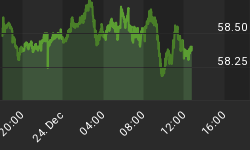Despite this week's bounce, investor sentiment remains very extreme, and this is a bullish signal.
As I have detailed recently and over the past couple of years, the best time to get long the market (on average) is following 2 consecutive weeks of bearish sentiment. This is week #3. (See this article: What do the Numbers Say?). The numbers support the notion that you should be buying when others are bearish, but please understand that it doesn't always work out that way. Now I state these caveats not to hedge myself or the analysis, but to get the readers to understand that this is no holy grail. (See this article: Are you Looking for the Holy Grail?) There are risks. In any case, I would rather be a buyer here than 15% ago, and I believe the data is on my side.
Several other points are worth noting. One, failed signals are an ominous sign of significantly lower prices. I would consider the prior bull signal (see the June 12, 2011 commentary) a failed signal (see "A Floor has Been Set"), and the result speaks for iftself. Two, this is a bear market until proven otherwise; therefore, this is a counter trend trade.
The "Dumb Money" indicator (see figure 1) looks for extremes in the data from 4 different groups of investors who historically have been wrong on the market: 1) Investors Intelligence; 2) MarketVane; 3) American Association of Individual Investors; and 4) the put call ratio. This indicator shows extreme bearish sentiment, and this is a bull signal.
Figure 1. "Dumb Money"/ weekly
Figure 2 is a weekly chart of the SP500 with the InsiderScore "entire market" value in the lower panel. From the InsiderScore weekly report: "Insider sentiment remained very bullish, however, transactional volume declined significantly as the number of buyers fell -46% and the number of sellers declined -8%. This isn't entirely surprising - during market events such as what we've been experiencing we typically only see one week with the type of outrageous volume that we witnessed last week. Volume has actually returned to normal for the time of the quarter and year, however, buyers continue to outpace sellers by a more than 4-to-1 margin market-wide and more than 3-to-1 margin outside of financials. The latter figure is typically 1-to-1.55, so suffice to say that we're seeing an unusually large number of buyers and unusually small pool of sellers."
Figure 2. InsiderScore "Entire Market" value/ weekly
Figure 3 is a weekly chart of the SP500. The indicator in the lower panel measures all the assets in the Rydex bullish oriented equity funds divided by the sum of assets in the bullish oriented equity funds plus the assets in the bearish oriented equity funds. When the indicatoris green, the value is low and there is fear in the market; this is where market bottoms are forged. When the indicator is red, there is complacency in the market. There are too many bulls and this is when market advances stall.Currently, the value of the indicator is 47.50%. Values less than 50% are associated with market bottoms. Values greater than 58% are associated with market tops.
Figure 3. Rydex Total Bull v. Total Bear/ weekly
Let me also remind readers that we are offering a 1 month FREE TRIAL to our Premium Content service, which focuses on daily market sentiment and the Rydex asset data. This is excellent data based upon real assets not opinions!
















